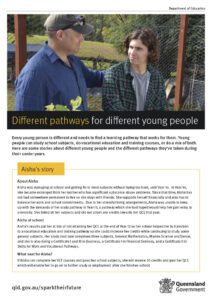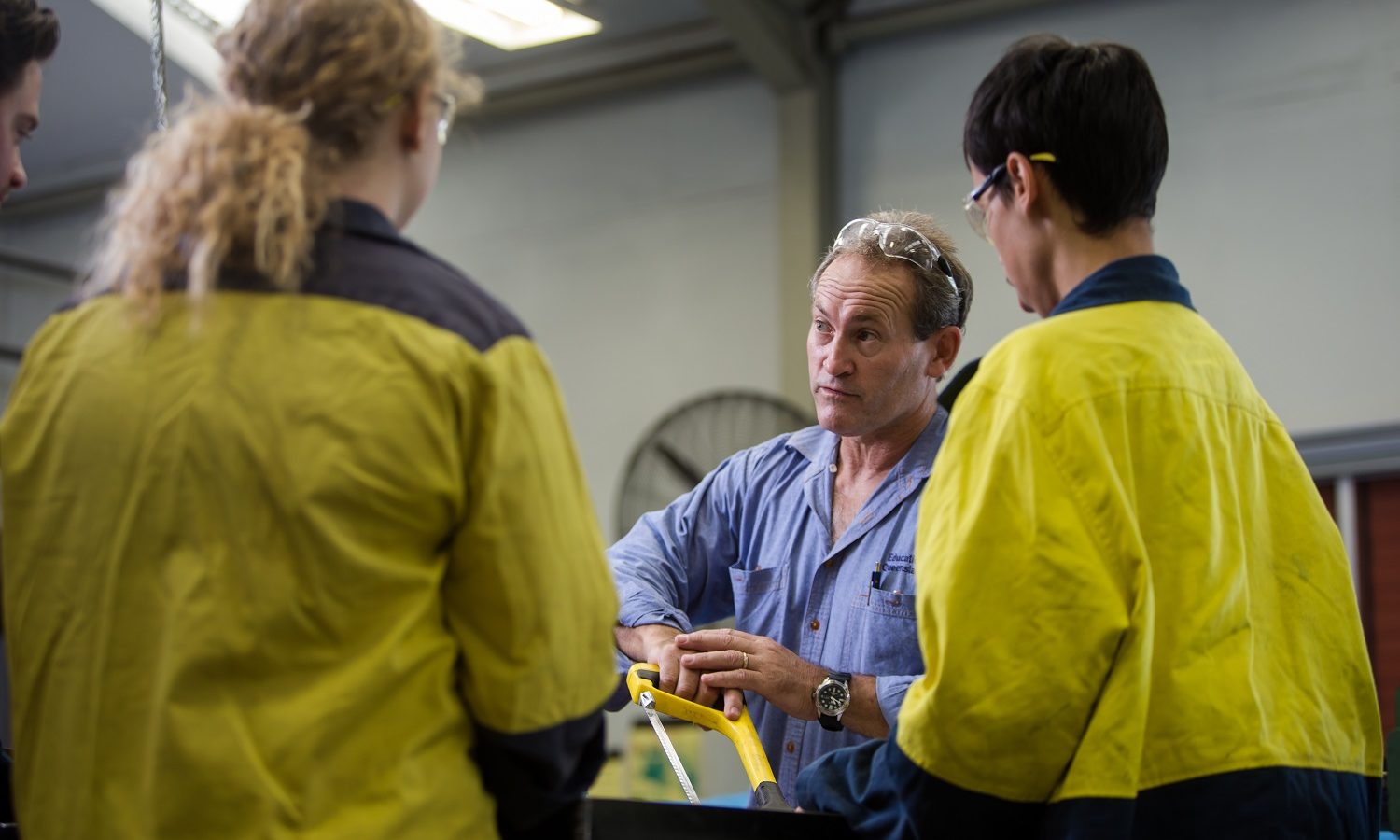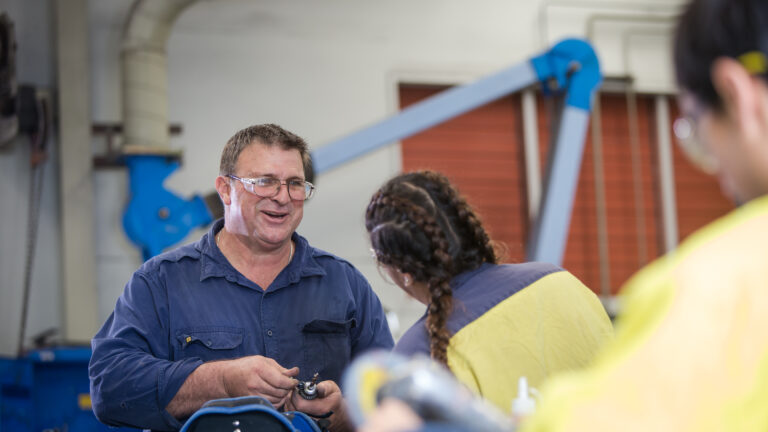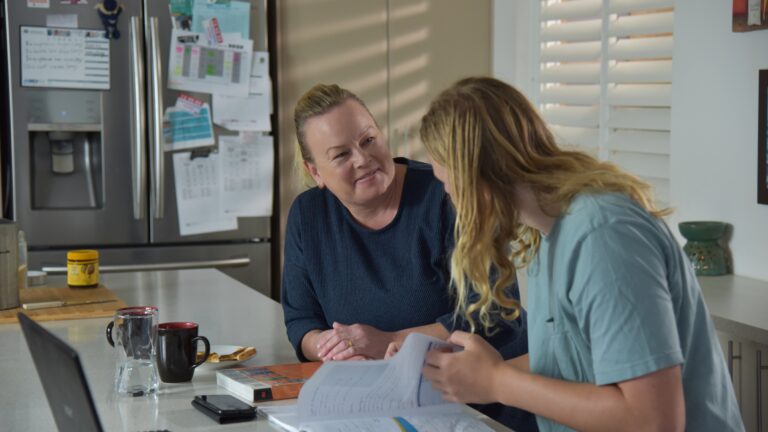Key Points
- Young people can start an apprenticeship or traineeship while they’re still at school.
- Apprenticeships and traineeships are available in many industries including aviation, beauty, health, tourism and travel, boating and marine, printing and graphics.
- Students who study an apprenticeship or traineeship at school can get on-the-job experience while working towards a nationally recognised qualification.
- A school-based apprenticeship or traineeship can contribute points towards your teen’s Queensland Certificate of Education (QCE).
- Speak to the school to find out how your teen can apply for a school-based apprenticeship or traineeship.
Did you know your teen can start an apprenticeship or traineeship while they’re still at school? School-based apprenticeships and traineeships allow young people to study at school while getting on-the-job experience through training and working to gain a nationally recognised qualification in a trade or occupation.
When can a young person start?
Teens can start an apprenticeship or traineeship while they are still at school, generally in Years 10, 11 or 12, while studying for their Queensland Certificate of Education (QCE). To do a school-based apprenticeship or traineeship, some eligibility requirements need to be met. Your teen’s school can discuss these requirements with you and advise you on what steps your teen will need to take to meet them.
What kinds of industries can they work in?
There are more options than you think with apprenticeships and traineeships available in many industries including aviation, beauty, health, tourism and travel, telecommunications, library and museum services, printing and graphic arts, conservation and land management, business, and boating and marine.
Why do a school-based apprenticeship or traineeship?
Students who study a school-based apprenticeship or traineeship can:
- study at school and get paid on-the-job experience while being trained and working towards a qualification in a trade (apprenticeship) or occupation (traineeship)
- be trained in trades like electrical, plumbing, cabinet-making or automotive and industries like business administration, information technology and tourism
- access learning opportunities that suit young people with more practical learning styles
- gain skills towards a nationally recognised qualification (Certificate II, III, or higher)
- have the chance to build a relationship with a potential employer for when they leave school
- gain skills and experience to help them go on to university down the track.
Do many young people do apprenticeships and traineeships while still at school?
In 2019, almost 5000 Queensland students finishing Year 12 had participated in a school-based apprenticeship or traineeship. Students who take this learning pathway can work towards a nationally recognised qualification while studying for their QCE. Some of the most popular courses are business, information and communication technology, hospitality, construction, fitness, and sport and recreation.
How many credits does an apprenticeship or traineeship earn towards the QCE?
Different VET courses and school subjects can earn different points towards a student’s QCE. For a school-based apprenticeship, the maximum credit available is 6 and for a school-based traineeship, the maximum credit available is 8. The number of credits a student can earn when studying an apprenticeship or traineeship at school will depend on the skills they learn and the hours they complete before they finish Year 12.
How can my teen apply?
1. Speak to the school
To apply for a school-based apprenticeship or traineeship, the first step is to talk to your child’s school. Your teen’s school may have a guidance officer, VET coordinator or head of senior schooling who can help you and your teen work out the right learning pathway for your teen and talk you through the process of applying for a school-based apprenticeship or traineeship.
2. Find an employer
To do a school-based apprenticeship or traineeship, your teen will need an employer willing to employ them and help train them. There are a number of ways your teen can find an employer:
- Talk to the guidance officer or vocational officer at your child’s school as they may have connections and know an employer willing to take on your teen.
- Speak to people you know who work in industries that your teen would like to learn more about as they may know an employer looking to take on an apprentice or trainee.
- Search job boards to find employers looking to hire apprentices or trainees:
- Sign-up with a Group Training Organisation (GTO). GTOs employ apprentices and trainees and place them with one or more host employers so they can do their apprenticeship or traineeship.
- The GTO will pay your teen’s wages and organise their training with the training organisation.
- The employer will work with your teen day-to-day and supervise their on-the-job training.
- Visit the DESBT website for the contact details of Queensland GTOs.
Before your teen approaches any employers, encourage them to prepare a resume outlining any paid or volunteer work they’ve done, plus their skills, abilities, hobbies, and personal qualities.
3. Confirm a training organisation
As part of a school-based apprenticeship or traineeship, your teen will study with a training organisation either at school if their school is registered to deliver training or at an outside training organisation. The training organisation will deliver the training and assess your teen’s skills and competence as they progress through their apprenticeship or traineeship. The school will help you and your teen organise a timetable that allows your teen to complete their school subjects, and/or other VET courses, and their training and employment as part of their school-based apprenticeship or traineeship.
4. Sign a contract
If your teen decides they want to do a school-based apprenticeship or traineeship, you, the employer, and your teen must sign a legally binding training contract agreeing to work together for the length of the apprenticeship or traineeship.
When does a student complete their school-based apprenticeship or traineeship?
Students can generally complete their traineeship while still at school depending on the length of the traineeship and at what point during their schooling the student started the traineeship. It is unlikely a school-based apprenticeship could be completed while a student is still enrolled at school because there is usually not enough time to do all the off-the-job training during the school years. When a school-based apprentice completes Year 12, their school-based apprenticeship is automatically converted to a full-time apprenticeship. If a student wants to continue their apprenticeship on a part-time basis, they can do this by talking to their contact at the Department of Employment, Small Business and Training’s regional office before they finish Year 12. It’s important to note that when an employer takes on a school-based apprentice, they are committing to convert that apprenticeship to full-time once the student completes Year 12.
Costs to ask about
There may be some costs associated with your teen doing a school-based apprenticeship or traineeship so make sure you ask the school about any additional costs so you can plan for them. Such costs could include:
- fees for attending the training organisation
- uniforms and equipment
- text books and other study materials
- parking or transport costs.
Your role as the parent or carer
If your teen wants to do a school-based apprenticeship or traineeship, they will need your support along the way.
- If your teen is thinking about doing a school-based apprenticeship or traineeship, they may need your help in finding out how to enrol, and in working with the school to set things up.
- If your teen wants to start a school-based apprenticeship or traineeship, you’ll need to give your consent if they are under 18 years of age unless they are living independently.
- While your teen is doing a school-based apprenticeship or traineeship, you’ll need to stay in touch with the school and your teen’s employer to let them know if your teen cannot attend work or training (due to illness, for example).
- If your teen changes schools, you’ll need to talk to the new school to find out if your teen can continue their school-based apprenticeship or traineeship at their new school.
This guide outlines all the requirements of school-based apprenticeships and traineeships including the role of parents.
Remember: consider all the options
School-based apprenticeships and traineeships are not for everyone so it’s important your teen considers all their options before making a decision about their learning pathway. Talk to your teen’s school as they can explain the different options and help your teen find the right pathway for them.
Download tip sheet: Different pathways for different young people
More information
Last Updated: 22 February 2024






